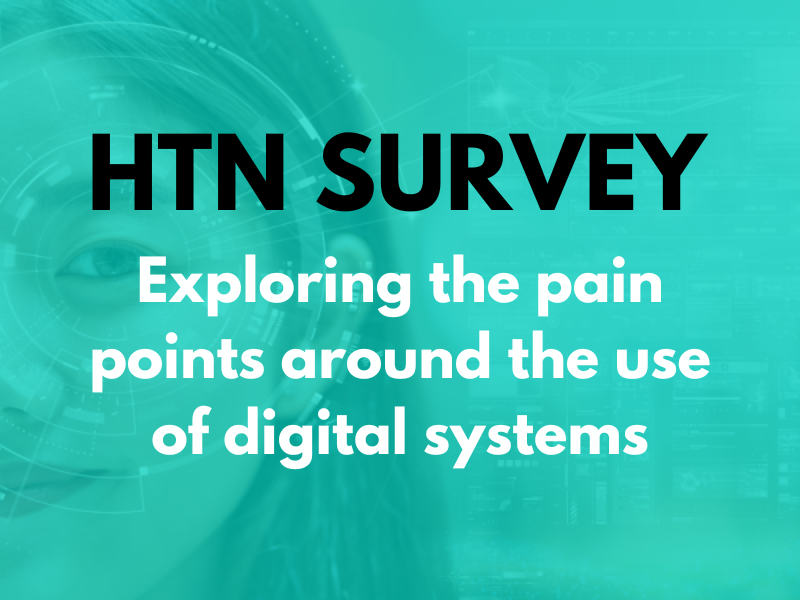The government’s State of Digital Government Review has offered a “realistic and unflinching” analysis of tech in public services, highlighting fragmented technology, underused data, low service reliability, dependence on external resources for core skills, and funding which does not reflect modern digital practice. The review also highlights examples of good practice from within the NHS for other sectors to learn from.
Headline findings from the review include that users of public services “expect more”, and that “45 percent of NHS services still lack a digital pathway”. The review notes that £45 billion per year in “unrealised savings and productivity benefits” could be achieved through full potential digitisation, the “fragmented and duplicative” nature of public sector tech, and the underuse of data which “holds back AI, machine learning, and advanced analytics”.
It continues to highlight low service reliability with many systems not having “adequate” plans in place for managing incidents, as well as a “critically high” cyber risk, a concentration of cloud adoption within central government, and a dependence on external resources to “augment digital and data teams”.
The review moves on to identify five “root causes”: leadership, structure, measurement, talent, and funding. On leadership, it notes that there is “little reward for prioritising an agenda of service digitisation, reliability, or risk mitigation”, with organisational leaders “not paid, promoted, or valued for doing so” and with digital not shaping or driving the organisational agenda.
For structure, it remarks that “fragmentation is a feature of the system”, with most public sector organisations choosing to build and maintain their own technology estate, “inhibiting standardisation, interoperability and reuse, and constraining the ability to benefit from scale”. With the measurement cause, noting the lack of consistent metrics for digital performance, with data on quality, user experience, cost, and risk exposure “not available without dedicated, periodic effort”.
Focusing on talent, it comments that the public sector is “uncompetitive” with the private sector in terms of compensation and career progression, and that “headcount restrictions intended to constrain spend have shifted cost and talent to third-party contractors, managed services and IT consultants, also degrading institutional knowledge”.
Focusing on funding, it finds that spend is prioritised for new programmes, presenting “an acute challenge” for digital and data projects along with the shift to subscription-based services, “increasing the reliance on committed ongoing funding”.
For the NHS specifically, issues highlighted by the review include a lack of standardised integration frameworks, with systems that “cannot easily work with each other and require bespoke point-to-point integration”, and individual trusts managing separate technology estates, which taken together “create a broader attack surface” increasing vulnerability to cyber threats. Continuing on this point, it states that “the diverse set of technology” of varying ages and with varying levels of support across the NHS, mean that it is “particularly exposed to failure and cyber attack”.
As much as 70-85 percent of tech budgets are spent on upkeep, rather than modernisation or innovation, the review continues, and cloud adoption across the public sector is “inconsistent”. The structure of the NHS “drives fragmentation”, it states, “constraining buying power, shared capabilities, and the ability to manage talent”. Mapping digital and data roles to the Agenda for Change pay bands and career paths has “introduced further challenge in both uncompetitive pay and progression based on a very different model”, it goes on.
On successes, the review refers to the unique needs and opportunities of the NHS, outlining examples of good practice for the rest of the sector such as “pioneering AI”, with approaches being trialled that the rest of the public sector could learn from; progress around the development of common platforms including the Federated Data Platform and the systems comprising NHS Spine; and high levels of take up for the NHS app, driven by COVID, making it “one of the most used apps in the country”. It also highlights examples of centralised and shared capability across the NHS, including NHS England’s provision of cyber security services across the system, to help “maximise reusability and ensure compliance with higher security standards and independent security audits”. Over 80 percent of trusts have a named CDIO, according to the review, “though only 50 percent of these CDIOs had a seat on the trust board”.
The review concludes with a recognition of the “shared sense of mission” felt by those surveyed for the report, remarking on “the commitment and tenacity” of the public sector digital workforce. “However, our approaches to leadership, structure, measurement, talent and funding do not yet do justice to this potential: it is time to transform and reform the way we do digital”, it finishes.
To read the State of Digital Government Review in full, please click here.
Challenges for digital and innovation in health and care
HTN’s poll series over on LinkedIn has drawn some interesting takes on some of the key questions facing NHS leaders in the last few months. Our poll following the general election asked our audience which of Labour’s key areas of focus should take priority for the new government, with primary care reform achieving a significant winning margin with 60 percent of the vote. In late September, a separate poll asking our readers where they thought digital investment should go in the short term, saw 35 percent of votes coming in for digitising/removing paper, with cross-organisational workflows coming in close second place with 29 percent of the vote.
Our HTN Now panel discussions have also produced interesting learnings and examples of best practice on outlining and overcoming the challenges around digital and innovation in health and care. Back in September, a panel discussion on interoperability highlighted the complexity of projects in this area, exacerbated by the involvement of multiple suppliers, maintaining standards, dealing with technical challenges, and managing costs and expectations. And a discussion from the end of November on putting Lord Darzi’s findings into action saw our expert panellists talk about creating headroom and capacity for digital projects, scaling examples of good practice, surfacing the right data, and not being afraid of failure.
Be sure to check out our 2025 event schedule packed with opportunities for learning and sharing best practice from across the health system. And why not join us tomorrow for a HTN Now panel discussion on the role of digital in supporting NHS reforms, looking at how digital is helping to modernise services, make the shift from hospital to community, and from sickness to prevention.





